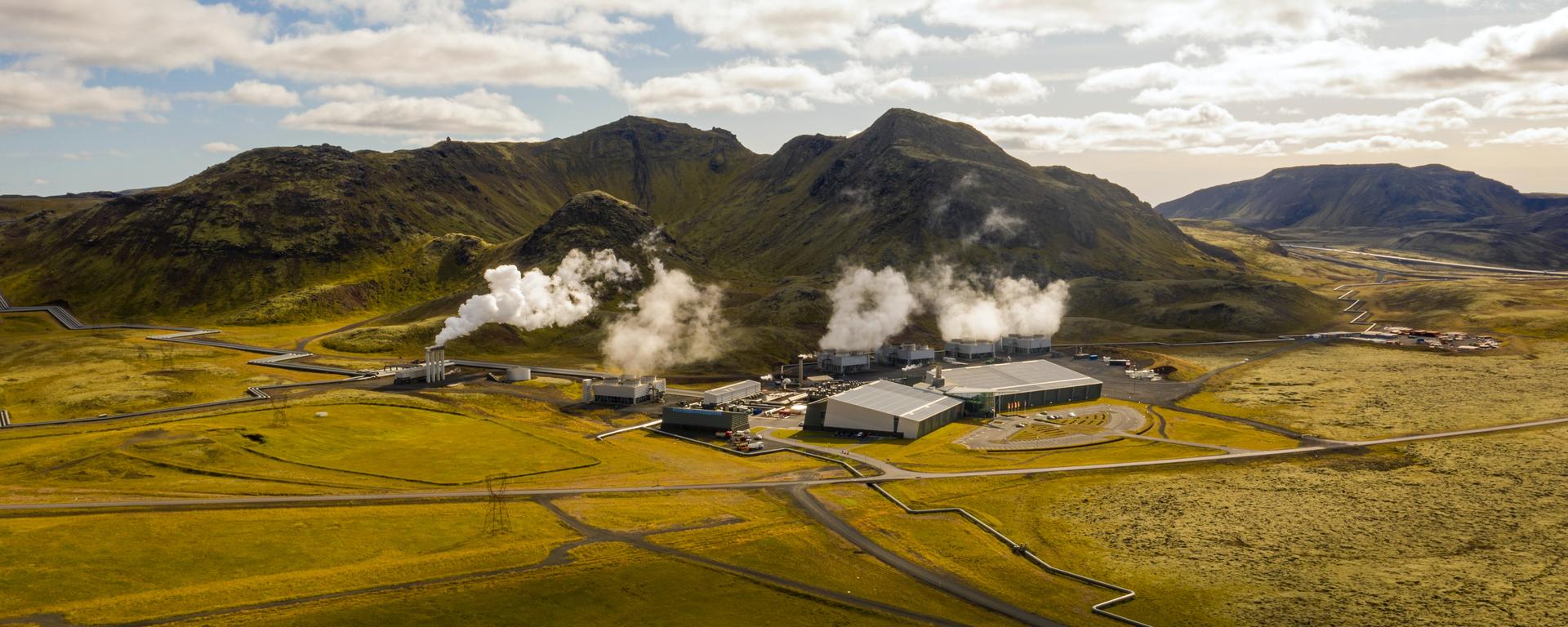In designing an optimal geothermal energy system, it's not just the wells and surface turbine that need to be considered.
Focus Areas
- Thermal energy flow at the reservoir, well and pore-scale to understand thermal conductivity of heterogenous materials and the role of convection
- Effects of scaling and corrosion on equipment and reservoir performance
- The geochemistry of hot fluid transfer
- Nanofluids and nano-conducting materials
- CO2 capture and geothermal utilization
- Pore level modeling of heat transfer
- New experimental techniques for heat transfer measurements
Thermal and Fluid Flows in Reservoirs
A key component of the puzzle is an improved understanding of the thermal properties of igneous, metamorphic, and sedimentary rocks and their potential for heat exchange, fluid flow, and heat capacity at different scales. In particular, it has been shown that heat capacity and thermal conductivity are functions of temperature pressure and saturation but remain poorly understood for subsurface formations. Core and pore-scale imaging and experiments will provide data on nano- and micro-scale flow and thermal diffusivity and will be scaled to core, well and reservoir scale using a variety of upscaling and machine learning methods. Once understood, an optimal heat recovery process must be designed which takes into consideration.
Work to date demonstrates that unless the pore level heat transfer (conduction and convection) is not well understood, we will always rely on empirical correlations to predict thermal behavior.
Thermal and fluid flows must be understood and characterized at the reservoir, well and pore scale to gain insight into the contribution of convection and conduction in thermal flows.
Drilling, Well Designs and Completions
Traditional geothermal systems are either open-loop, where formation fluid is used as the thermal fluid, or closed-loop, where a thermal fluid in a sealed wellbore is heated through conduction by the surrounding formation. Many existing geothermal systems are cooling at higher rates than predicted or are producing less heat than anticipated. In addition, open-loop systems carry the additional risk of pressurized fluid injection into formations without stress anisotropy, allowing for fluid flow outside of targeted zones.
Use of existing technology from oil & gas drilling promises to enable low-cost drilling of sedimentary geothermal reservoirs but needs to updated to provide a similar step change in performance for basement drilling. Existing oil & gas facilities may also be repurposed for low-temperature geothermal applications.
Potential field scenarios for recovering subsurface heat. (A) uses a fracture and a mixture of reservoir fluid and injection fluid to capture and produce heat. (B) through (D) are closed loop systems where a thermal fluid is injected, heated through conduction by the formation and then produced. (D) includes a subsurface flow loop to capture additional thermal energy.
Focus Areas
- Drilling optimization to improve drilling rates to access thermal reservoirs
- Well designs for optimal thermal recovery in both open-loop and closed-loop systems
- Materials and insulation techniques for drilling and completions
- Re-use of existing oil & gas infrastructure
Focus Areas
- Thermodynamic energy recovery optimization
- Use of residual heat
- Surface facility design for minimal footprint and reduced noise
- Miniaturization, integration and optimization
- Alternative uses of how enthalpy heat
Thermodynamics and Surface Facilities
In oil and gas production, whether there are hydrocarbons from hot formations (80oC+) or thermal production (~200oC) generates an enormous amount of heat that needs to be cooled for further processing. As an example, Alberta generates over 600,000m3 of bitumen daily. At an average Steam to Oil Ratio of 3, 2,400,000m3 per day of hot emulsion is produced per day which is cooled to approximately 60oC prior to further processing. This corresponds to 14*108MJ/day or 20*105MW of sustained energy that is essentially left to waste. The equivalent number of light hydrocarbons produced from Alberta alone is 80,000m3 and with an average amount of water oil ratio to 5 this corresponds to an additional 1.2*105MW*.
The wasted energy out of all the chemical plants, power plants, refineries, etc. is not even considered. And it should.
Sustainability, Social License and Indigenous Perspectives
The exploration and development of Geothermal Energy can provide an exciting opportunity to impact our collective efforts towards a low carbon, net-zero future, within existing industry activities as well as expanding and diversifying future energy sources. Geothermal energy may also provide an opportunity to address social issues such as energy poverty and energy inequities in remote communities and Indigenous Nations.
Reviewing and addressing this work through a lens on sustainability includes a balanced assessment of activities and metrics for success regarding social, environmental, and economic impacts
We recognize the adoption of the United Nations Declaration on the Rights of Indigenous Peoples (UNDRIP) as well as the Canadian constitutional requirement to engage, involve and honour Indigenous rights and treaty obligations. We recognize the importance of working with Indigenous peoples and working to understand and incorporate Indigenous perspectives throughout the life cycle of any future development projects.
This will include the engagement and effort to build relatives in Treaty 7 territory, where the University of Calgary resides, and beyond as our students, graduates, and industry partners live, work and operate across Canada.
Focus Areas
- Evaluation and creation of metrics and key performance indicators for projects in sustainability including measurements on environmental, social, and economic performance
- Focus on engagement, awareness building, and involvement of the public, stakeholders, and rights holders to enhance social license efforts
- Engagement, inclusion and partnership with Indigenous (First Nations, Métis and Inuit) peoples, business organizations, leaders, Elders and knowledge keepers

